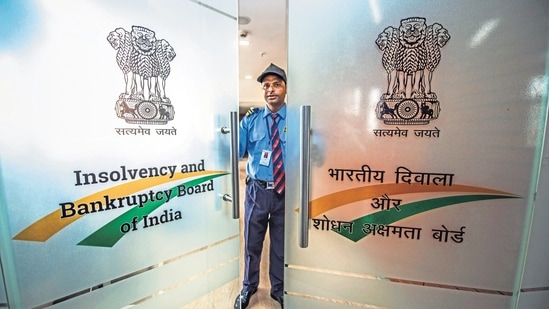The government intends to amend India’s six-year-old Insolvency and Bankruptcy Code (IBC).

Insolvency and Bankruptcy Code (IBC)
- The Indian Bankruptcy Code (IBC) of 2016 seeks to consolidate the existing framework by creating a single law for insolvency and bankruptcy.
- It is a one-stop shop for resolving insolvencies, which was previously a lengthy process that did not provide an economically viable solution.
- The code’s goal is to protect small investors’ interests while also making doing business easier.
Key features
- Individuals, corporations, and partnership firms have separate insolvency resolution processes outlined in the Code. Either the debtor or the creditors can start the process. Corporates and individuals have a maximum time limit for completing the insolvency resolution process.
- Companies must complete the process in 180 days, which can be extended by 90 days if a majority of creditors agree.
- The resolution process for startups (other than partnership firms), small businesses, and other companies (with assets less than Rs. 1 crore) would be completed within 90 days of the request’s initiation, which could be extended by 45 days.
- Insolvency regulator: The Insolvency and Bankruptcy Board of India is established by the Code to oversee insolvency proceedings in the country and to regulate the entities registered under it. The Board will have ten members, including representatives from the Finance and Law Ministries, as well as the RBI.
- Insolvency practitioners: Licensed professionals will oversee the insolvency process. During the insolvency process, these professionals will also have control over the debtor’s assets.
- Bankruptcy and Insolvency Adjudicator: The Code proposes two separate tribunals to supervise the insolvency resolution process for individuals and businesses:
- The National Company Law Tribunal hears cases involving corporations and limited liability partnerships, while the Debt Recovery Tribunal hears cases involving individuals and partnerships.
The changes being proposed
- Easier settlements: It is proposed that the process be divided into two phases, with phase I focusing on finding potential buyers and handing over management to the acquirer. Phase II would deal with the distribution of proceeds to creditors and the resolution of inter-creditor disputes. This would involve making an effort to resurrect the units through better management wherever possible.
- Avoiding delays: The average number of days it takes to resolve a case has increased to 679 in H1FY23 from 230 in FY18. The proposed changes aim to address inter-creditor disputes, which have been identified as the leading cause of delays.
IBC seen as a game-changer
- The IBC has proven to be a deterrent to many unscrupulous borrowers while also providing banks with tools to be reasonably confident in recovering NPAs.
- Fear of losing control of the company pushes debtors to pay their bills.
- Until September 2022, 23,417 applications for the initiation of the Corporate Insolvency Resolution Process (CIRP) were resolved before admission, with an underlying default amount of $7.31 trillion.
- The code indirectly provides an exit route by terminating commercially unviable units.
Source: https://www.livemint.com/news/india/why-bankruptcy-regime-in-india-needs-finetuning-11672160266596.html
